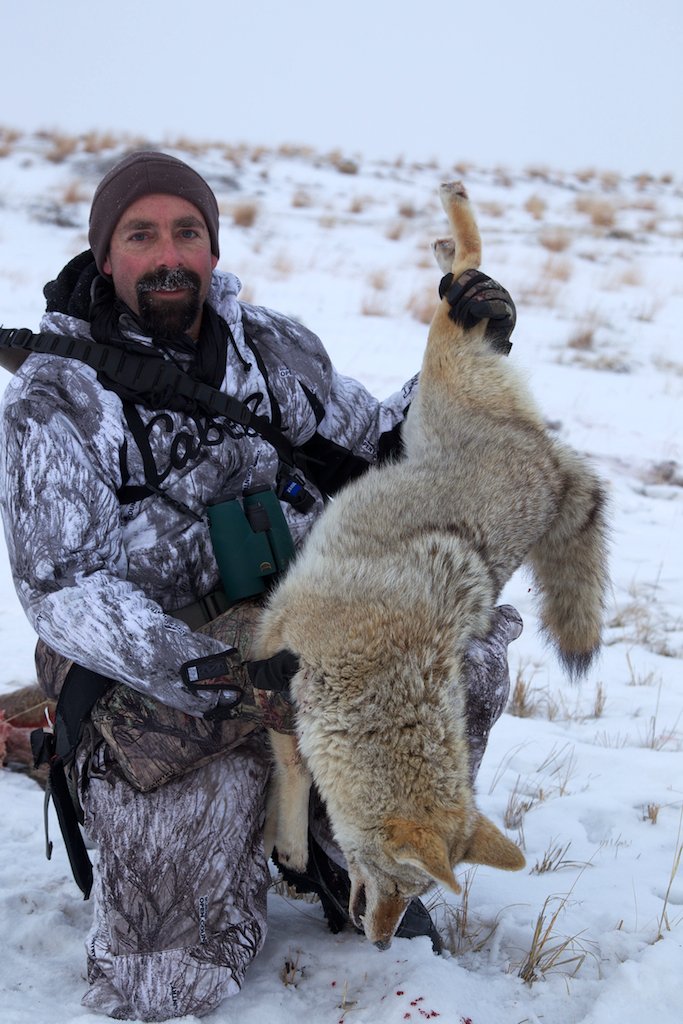Think you know everything there is to know about coyotes? Then you probably don’t need to read Michael Huff’s new book on the canines. But for everyone else, there’s plenty to learn in the short, quick-moving, and highly educational book about our most ubiquitous wild predator.
Understanding Coyotes: The Comprehensive Guide for Hunters, Photographer and Wildlife Observers sets out to clear up some of the misconceptions surrounding coyotes. The author, a native of Pennsylvania, is an independent author, photographer, and a registered Pennsylvania Predator Hunting Guide. Huff’s book uses scientific research and personal experience to create a thorough compendium that addresses diet, behavior, and interactions with other wildlife. The book does an excellent job of communicating knowledge gained over years of coyote research without overwhelming the reader.
One of the topics Huff thoroughly addresses is the impact of coyote predation on deer. In the book, Huff points out that coyotes do not typically kill deer year round. Instead, coyotes target newborn fawns before they have the ability to outrun coyotes. Deer hair that is found in coyote scat after the fawning season is likely a result of scavenging on deer carcasses, rather than evidence of a fresh kill. Though the impact of coyotes varies by habitat and region, some research studies have shown that coyotes are responsible for as much as 50 percent of all fawn deaths in a given year (Kilgo et al. 2014, Gulsby et al. 2015).

Huff also investigates the impact of coyote reduction on fawn survival. In Oklahoma and Alabama, researchers quantified how coyote removal impacted the deer herd. In both studies they determined that the removal of coyotes resulted in an increase in the fawn-to-doe ratio, which is the number of fawns per doe. In Alabama, the fawn to doe ratio increased from 0.68 to 0.97 following removal, and from 0.37 to 0.94 following removal in Oklahoma (Stout 1982, VanGilder et al. 2009).
But Huff notes that when deer herds are at or above regional carrying capacity, the removal of coyotes may be a wasted effort. In this scenario, the fawns that are killed by coyotes would have died due to a lack of forage, since the deer are overpopulated and exhausting resources (VanGilder et al. 2009). This is a prime example of compensatory mortality; the fawn will die either way.
At only 111 pages, the book packs a ton of information without getting overly complicated or dull. The best part about this book is that Huff wades through the gauntlet of scientific papers to find useful scientific research, and he communicates it to the reader in an understandable way. At only $19.95 on Amazon.com, I recommend this book for any sportsman or nature lover that is even slightly interested in coyotes.
Sources
Gulsby, W.D., C.H. Killmaster, J.W. Bowers, J.D. Kelly, B.N. Sacks, M.J. Statham, K.V. Miller. 2015. White-tailed deer fawn recruitment before and after experimental coyote removals in central Georgia_. Wildlife Society Bulletin 39: 248-255._
Kilgo, J.C., M. Vukovich, H.S. Ray, C.E. Shaw and C. Ruth. 2014. Coyote removal, understory cover, and survival of white‐tailed deer neonates_. The Journal of Wildlife Management 78: 1261-1271.
Stout, Gene G. 1982. Effects of coyote reduction on white-tailed deer productivity on Fort Sill, Oklahoma” Wildlife Society Bulletin 10: 329-332._
VanGilder, C. L., G. R. Woods, and K. V. Miller. 2009. Effects of an intensive predator removal on white-tailed deer recruitment in northeastern Alabama_. Proceedings of the Annual Conference of the Southeastern Association of Fish and Wildlife Agencies. Vol. 63._
